Iran is home to some of the most magnificent and historically significant gardens in the world, often referred to as Persian gardens. These lush, beautifully designed spaces have been an integral part of Persian culture for centuries, reflecting the deep connection between nature, architecture, and art.
The Best Persian Gardens
Iran is renowned for its breathtaking Persian gardens, which epitomize the perfect blend of natural beauty, art, and architecture. Among the best are the Eram Garden in Shiraz, known for its stunning floral displays and tall cypress trees, and the Fin Garden in Kashan, a UNESCO World Heritage site famous for its historic architecture and lush greenery. The Shazdeh Garden in Mahan stands out with its cascading fountains and terraces, creating an oasis in the desert. Renowned for their symmetry, intricate water features, and abundant greenery, Persian gardens offer a serene escape and a glimpse into the country's rich heritage. Each of these gardens provides a unique glimpse into the rich cultural heritage of Iran, making them must-visit destinations for anyone interested in the country’s historical and horticultural treasures.
Pasargadae Persian Garden
Pasargadae Persian Garden, located in Shiraz, is one of the oldest and most historically significant gardens in Iran. As part of the ancient city of Pasargadae, which was the first dynastic capital of the Achaemenid Empire, this garden exemplifies the early development of Persian garden design. Constructed under the reign of Cyrus the Great in the 6th century BC, it reflects the intricate blend of natural beauty and architectural ingenuity that characterizes Persian gardens. The layout of Pasargadae Garden follows the traditional Chahar Bagh design, which divides the garden into four quadrants with water channels and pathways intersecting at the center. This design symbolizes the Zoroastrian idea of paradise and represents the four elements of earth, water, wind, and fire.
Pasargadae Persian Garden is renowned for its historical significance and the remains of its sophisticated irrigation system, which once ensured a continuous flow of water to sustain the lush vegetation. Today, visitors to the garden can appreciate the ancient stone structures, remnants of the royal palaces, and the serene atmosphere that offers a glimpse into the grandeur of ancient Persian civilization. As part of the UNESCO World Heritage site of Pasargadae, the garden stands as a testament to the enduring legacy of Persian cultural and architectural excellence.
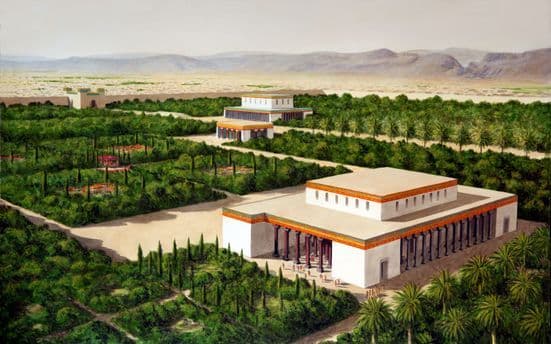
Eram Persian Garden
Eram Garden, located in Shiraz, is one of the most iconic and exquisite examples of the Persian garden design. This UNESCO World Heritage site dates back to the Seljuk Empire, with its current form largely influenced by the Qajar dynasty in the 19th century. Eram Garden is renowned for its stunning array of flora, including towering cypress trees, vibrant flower beds, and aromatic plants, creating a lush and tranquil environment. The garden's layout follows the traditional Chahar Bagh design, characterized by its symmetrical division into four parts, intersected by walkways and water channels.
At the heart of Eram Garden stands a majestic mansion, adorned with intricate tile work and beautiful murals, reflecting the rich architectural heritage of the region. The garden's elaborate water features, including fountains and reflecting pools, enhance its serene ambiance, offering visitors a peaceful retreat from the bustling city of Shiraz. Eram Garden also serves as a botanical garden, housing a diverse collection of plant species from around the world, which attracts both tourists and horticultural enthusiasts. With its combination of natural beauty, historical significance, and architectural splendor, Eram Garden remains a beloved cultural treasure and a must-visit destination for anyone exploring the enchanting city of Shiraz.
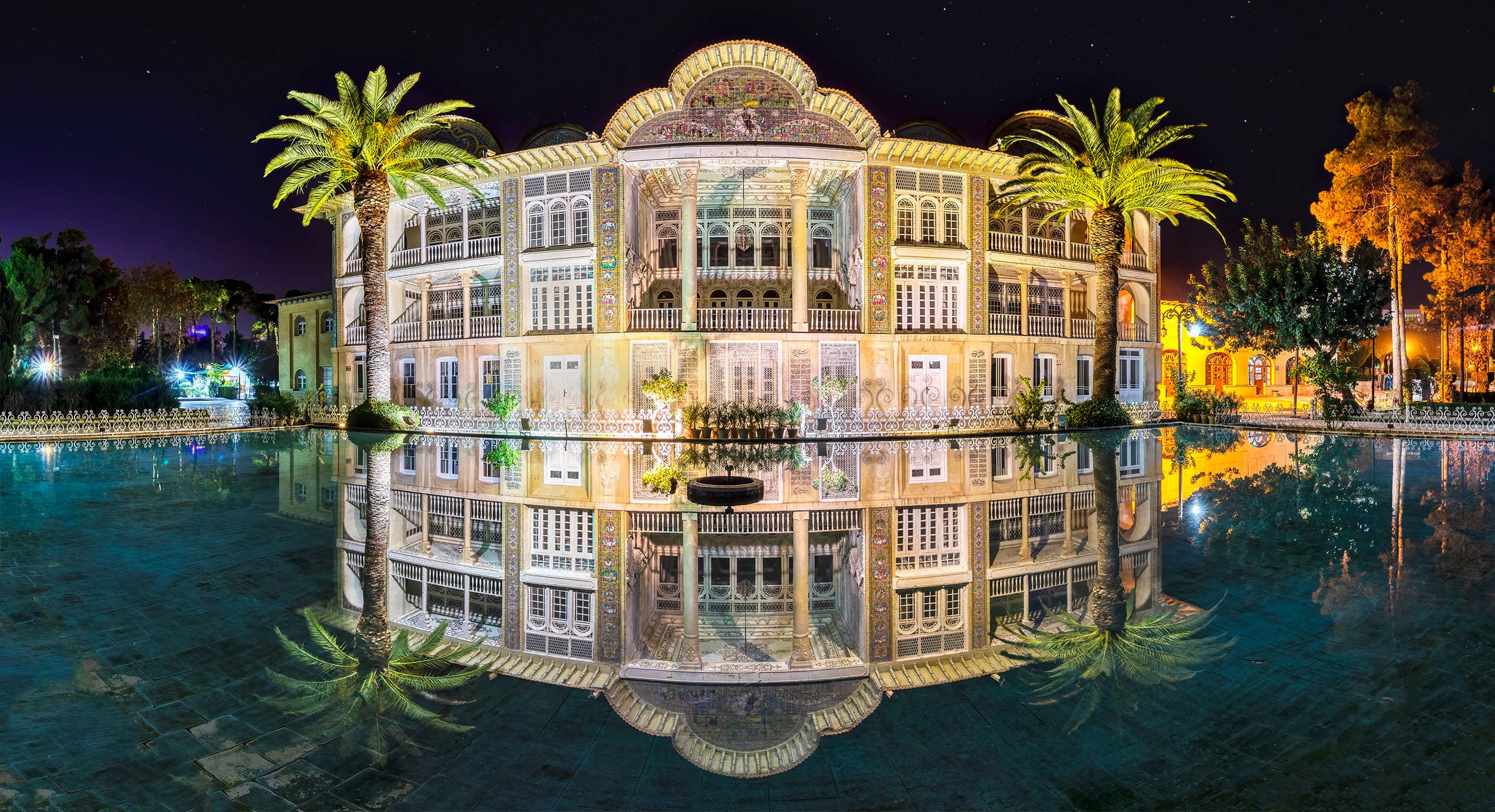
Fin Persian Garden
Fin Garden, located in Kashan, is one of Iran's most historically and architecturally significant Persian gardens. Established during the Safavid era in the early 16th century, it is a prime example of traditional Persian garden design, characterized by its meticulous layout and harmonious integration of natural and architectural elements. The garden follows the classic Chahar Bagh structure, which divides the space into four quadrants, symbolizing the Zoroastrian representation of paradise.
Fin Garden is renowned for its stunning water features, including pools, fountains, and intricate irrigation channels, all fed by the nearby Sulaimaniya Spring. These water elements not only enhance the garden's aesthetic appeal but also create a cool and refreshing environment, especially during the hot summer months. The lush greenery, including tall cypress trees and vibrant flower beds, adds to the garden's serene and picturesque ambiance.
At the heart of Fin Garden stands the historic Fin Bathhouse, famously known as the site where Amir Kabir, a prominent Qajar era chancellor, was assassinated. This tragic event adds a layer of historical significance to the garden, making it a poignant reminder of Iran's rich and complex history. With its blend of natural beauty and historical depth, Fin Garden remains a cherished cultural landmark and a must-visit destination in Kashan.
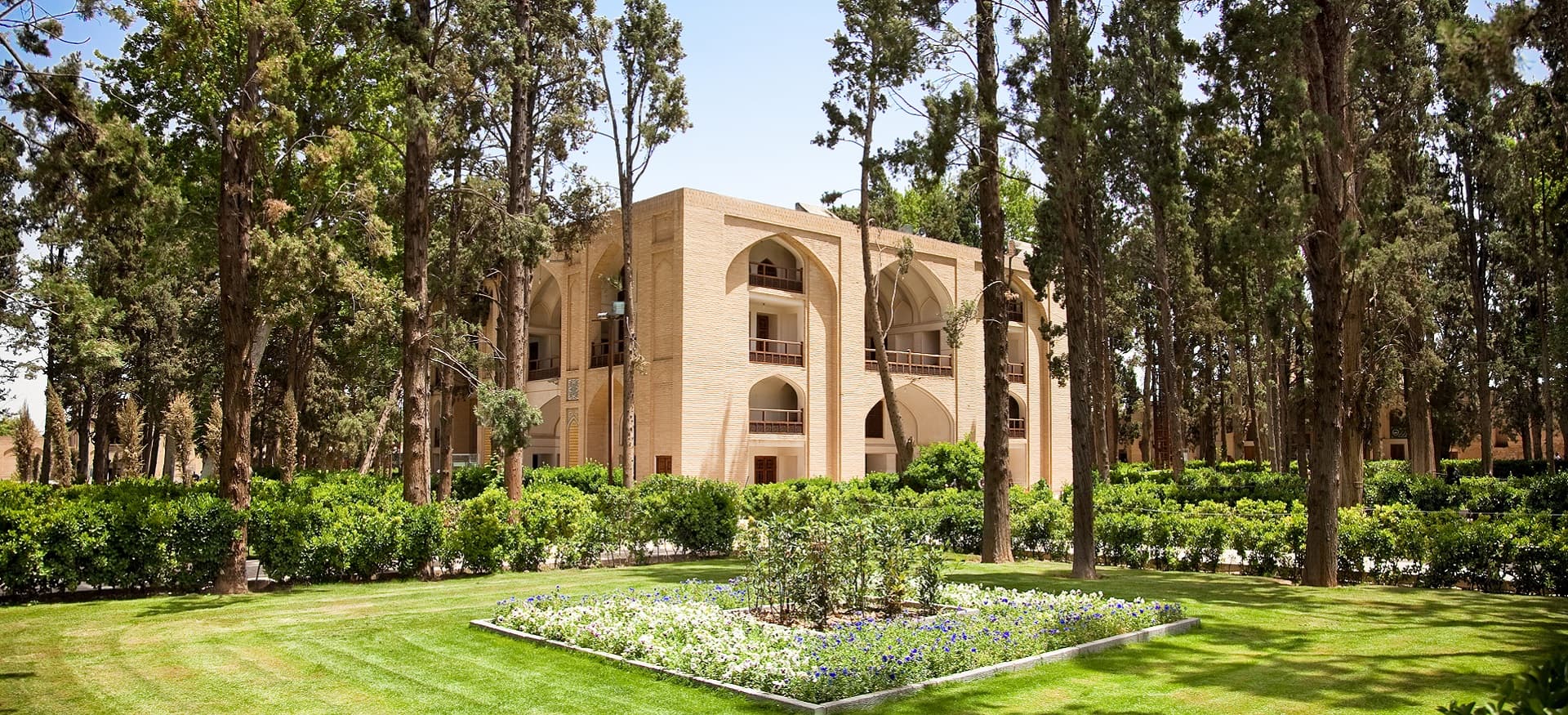
Shahzadeh Mahan Historical Garden
Shahzadeh Mahan Historical Garden, located in Kerman, is a stunning example of Persian garden design, showcasing the beauty and ingenuity of traditional Iranian landscaping. Constructed during the late Qajar era in the 19th century, this garden is nestled at the base of the picturesque Kerman mountains, offering a serene and enchanting escape. The garden's layout follows the classic Chahar Bagh design, with its symmetrical division and central axis highlighted by a series of cascading terraces and flowing water channels. These water features, fed by natural springs, create a cooling effect and enhance the garden's tranquil ambiance.
At the heart of Shahzadeh Mahan lies a magnificent mansion, which once served as the residence of a Qajar prince. The mansion's architecture, adorned with intricate tilework and ornate details, complements the garden's lush greenery, including towering cypress trees, vibrant flower beds, and aromatic plants. The garden's elevated position provides breathtaking views of the surrounding landscape, adding to its allure.
Shahzadeh Mahan Historical Garden is not only a testament to the rich cultural heritage of Iran but also a symbol of the timeless beauty and elegance of Persian gardens. Visitors to this garden can immerse themselves in its historical significance and enjoy the harmonious blend of nature and architecture that defines this iconic site.
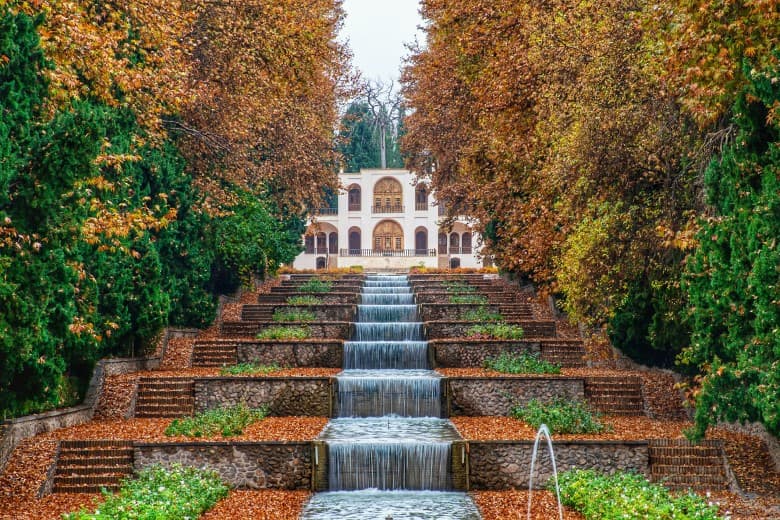
Abbas Abad Historical Garden
Abbas Abad Historical Garden, located in Behshahr, Mazandaran Province, is a magnificent Persian garden that dates back to the Safavid era in the early 17th century. This garden is part of a larger complex that includes a dam, a lake, and a palace, showcasing the ingenuity and grandeur of Persian landscape architecture. The Abbas Abad Garden is meticulously designed, following the traditional Chahar Bagh layout, with its distinctive four-part structure symbolizing paradise. The garden's pathways are lined with lush greenery, towering trees, and vibrant flowerbeds, creating a serene and picturesque environment.
One of the most striking features of the Abbas Abad Garden is its sophisticated water management system, which includes aqueducts and fountains that distribute water throughout the garden, enhancing its beauty and providing a cooling effect. The garden's dam and artificial lake not only serve an aesthetic purpose but also demonstrate the advanced engineering skills of the Safavid period. The remains of the palace and other architectural elements within the garden add a layer of historical significance, offering a glimpse into the opulent lifestyle of the Safavid rulers. With its combination of natural beauty, historical depth, and architectural brilliance, Abbas Abad Historical Garden stands as a testament to the rich cultural heritage of Iran and remains a must-visit destination for those interested in Persian garden design and history.
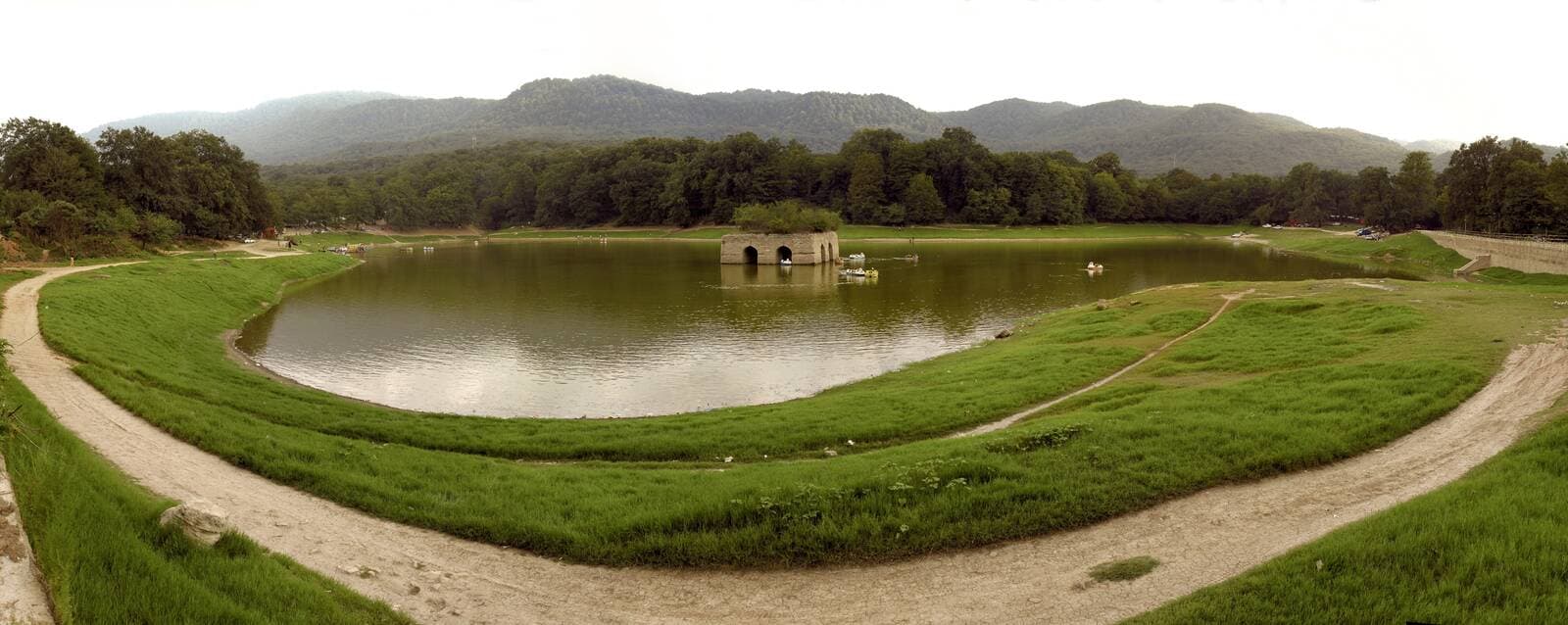
Chehel Sotoun Persian Garden
Chehel Sotoun, located in Isfahan, is an exquisite Persian garden and pavilion that epitomizes the grandeur and elegance of Safavid architecture. Constructed in the 17th century by Shah Abbas II, this garden and its pavilion were designed as a pleasure retreat and a place for entertaining dignitaries. The name “Chehel Sotoun” translates to “Forty Columns”, inspired by the twenty slender wooden columns of the pavilion, which, when reflected in the garden's long, rectangular pool, appear to double in number.
The garden's layout follows the traditional Chahar Bagh design, characterized by its geometric symmetry and meticulously planned water features. The reflecting pool, surrounded by lush greenery and beautifully manicured flower beds, adds to the serene and picturesque ambiance of the garden. Inside the pavilion, visitors are treated to stunning frescoes and intricate tilework depicting historical scenes, further showcasing the artistic and cultural achievements of the Safavid era.
Chehel Sotoun Garden is not only a testament to the architectural and horticultural expertise of its creators but also a symbol of the rich cultural heritage of Isfahan. As a UNESCO World Heritage site, it continues to attract visitors from around the world, offering a glimpse into the opulent lifestyle and refined tastes of the Safavid dynasty.
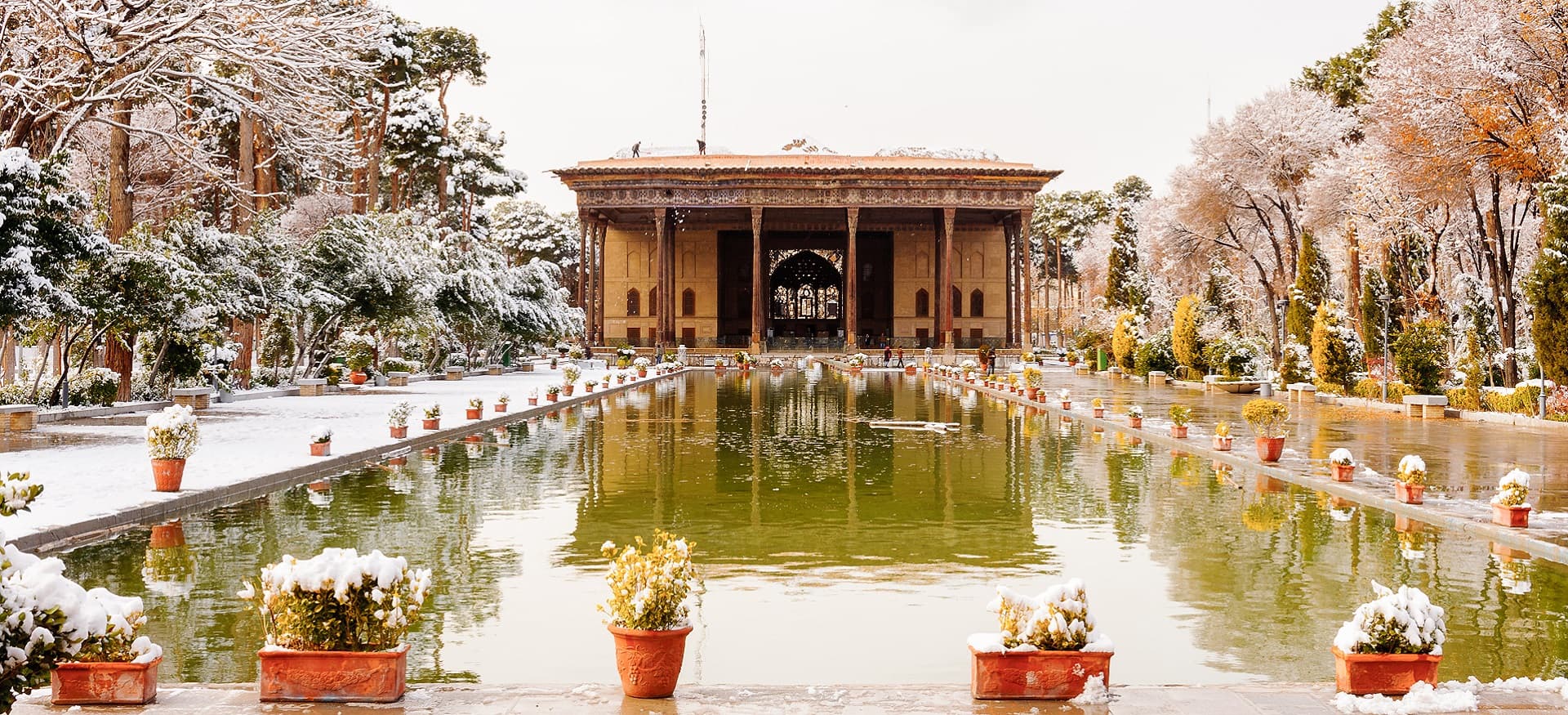
Akbarieh Persian Garden
Akbarieh Garden, located in Birjand, South Khorasan Province, is a splendid example of Persian garden design and architecture. Dating back to the late Zand and early Qajar periods, this historical garden is a UNESCO World Heritage site, celebrated for its beauty and cultural significance. The garden is part of a larger complex that includes two magnificent mansions, which once served as the residence of local rulers. These mansions showcase exquisite architectural details, including ornate stucco work, intricate tile patterns, and elegant wooden structures.
The layout of Akbarieh Garden follows the traditional Chahar Bagh design, with its geometric symmetry and division into four main sections. The garden is adorned with lush greenery, including towering cypress and pine trees, and vibrant flower beds that create a serene and picturesque environment. Water features, such as pools and fountains, enhance the garden's aesthetic appeal and provide a cooling effect in the arid climate of Birjand. Akbarieh Garden not only offers a tranquil escape but also serves as a testament to the rich cultural heritage and architectural ingenuity of the region. Its blend of natural beauty and historical significance makes it a must-visit destination for those interested in Persian gardens and the history of Iran.
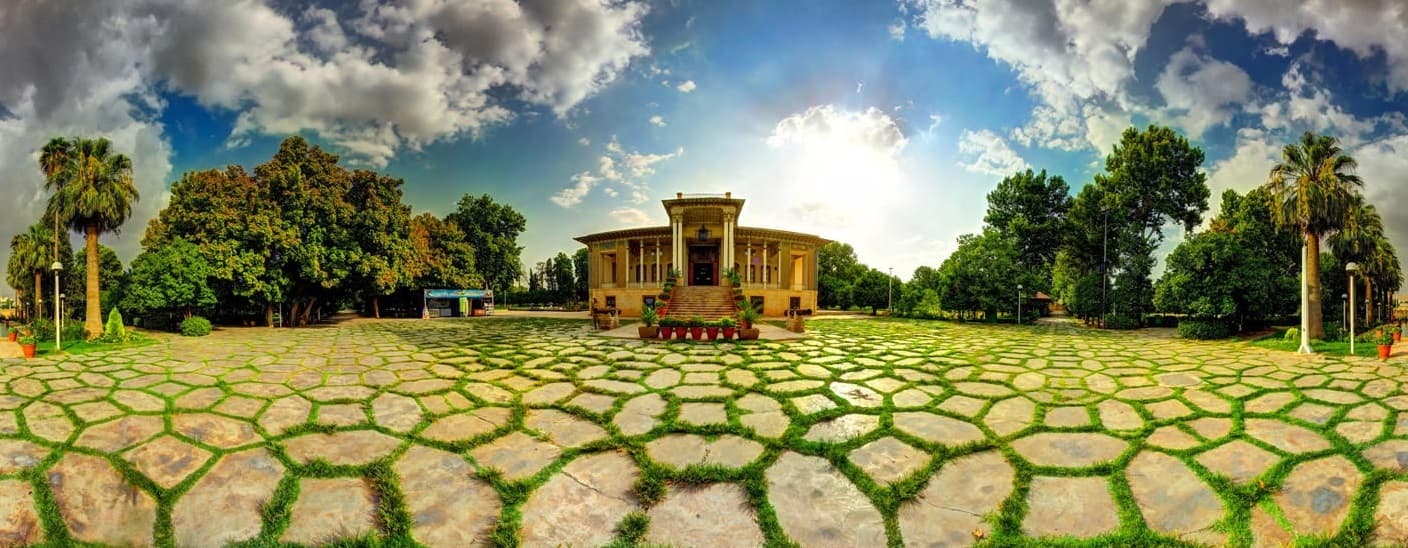
Pahlavanpour Persian Garden
Pahlavanpour Garden, located in Mehriz, Yazd Province, is a splendid example of Persian garden design that dates back to the Qajar era. Recognized as a UNESCO World Heritage site, this historical garden embodies the quintessential features of Persian gardens, including its symmetrical layout and sophisticated water management system. The garden follows the traditional Chahar Bagh design, characterized by its division into four main sections with intersecting pathways and water channels that create a harmonious and aesthetically pleasing environment.
At the heart of Pahlavanpour Garden is a beautiful mansion, once the residence of a prominent local figure. The mansion showcases exquisite architectural details, including elegant wooden elements, intricate tile work, and expansive verandas that offer stunning views of the garden. The lush greenery, featuring towering trees, vibrant flowers, and aromatic plants, creates a serene and picturesque atmosphere, providing a cool and refreshing escape from the arid climate of Yazd.
Water plays a central role in the garden's design, with a network of pools, fountains, and irrigation channels fed by an ancient qanat system that sustains the verdant landscape. Pahlavanpour Garden not only offers a tranquil retreat but also serves as a testament to the ingenuity and artistry of Persian garden design, making it a must-visit destination for those interested in Iran's rich cultural heritage.
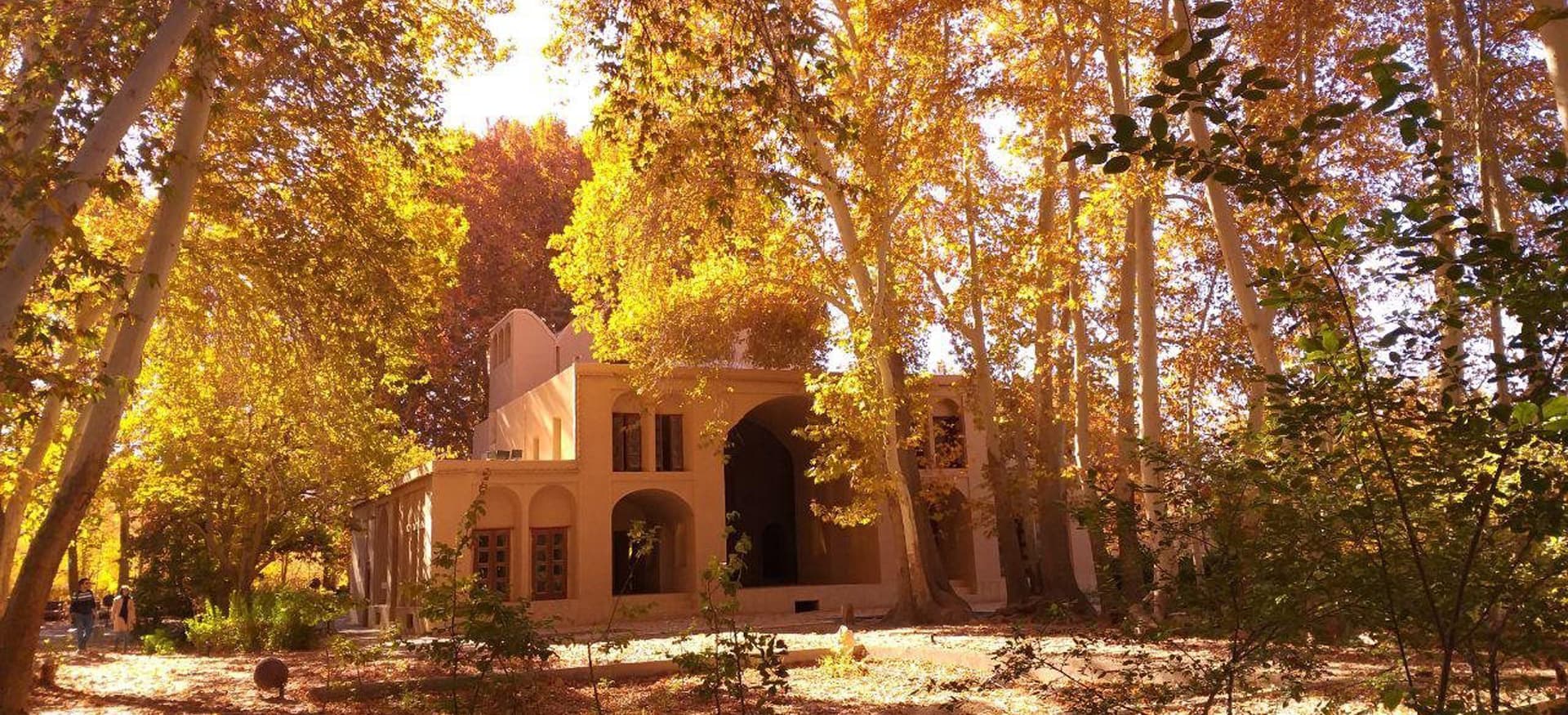
Dowlat Abad Garden
Dowlat Abad Garden, located in Yazd, is one of Iran's most exquisite examples of Persian garden design, renowned for its historical significance and architectural beauty. Established in the 18th century during the Afsharid dynasty, this garden exemplifies the traditional Chahar Bagh layout, characterized by its symmetrical division into four sections. The garden's centerpiece is the magnificent windcatcher tower, known as the tallest of its kind in Iran, which stands at 33 meters high. This architectural marvel not only adds to the garden's aesthetic appeal but also serves a practical purpose, using traditional cooling techniques to create a refreshing environment in the arid climate of Yazd.
Dowlat Abad Garden is adorned with a variety of lush greenery, including towering cypress and pine trees, fragrant flowers, and well-manicured lawns. The intricate water features, such as long reflecting pools and flowing channels, enhance the garden's serene ambiance and symbolize the life-giving properties of water in Persian culture. The garden also features elegant pavilions and beautifully decorated structures that showcase the exquisite craftsmanship of the era.
As a UNESCO World Heritage site, Dowlat Abad Garden is a testament to the ingenuity and artistry of Persian garden design. It offers visitors a tranquil retreat and a glimpse into the opulent lifestyle of the historical inhabitants of Yazd, making it a must-visit destination for those exploring Iran's rich cultural heritage.
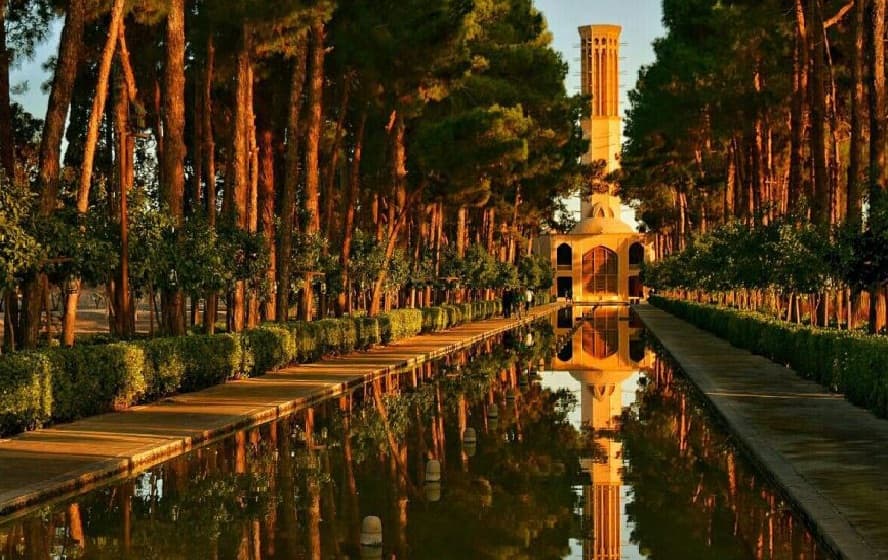
Jahan Nama Garden
Jahan Nama Garden, located in the heart of Shiraz, is one of Iran's oldest and most serene Persian gardens, dating back to the early Zand dynasty in the 18th century. This historical garden is renowned for its classic Persian layout, which embodies the traditional Chahar Bagh design. Symmetrically divided into four sections, Jahan Nama Garden features a central axis lined with pathways and water channels, creating a harmonious and balanced environment.
The garden's lush greenery includes towering cypress trees, vibrant flower beds, and fragrant shrubs, offering a peaceful retreat from the bustling city. One of the most striking features of Jahan Nama Garden is its intricate water management system, which includes a series of pools and fountains that enhance the garden's tranquility and provide a cooling effect in the warm climate of Shiraz.
At the center of the garden stands a beautiful pavilion, showcasing the architectural elegance of the Zand period with its intricate tile work and decorative elements. This pavilion was historically used by rulers and nobles as a place of relaxation and contemplation. Today, Jahan Nama Garden remains a cherished cultural site, attracting visitors with its serene ambiance and historical significance, making it a must-visit destination for anyone exploring the rich heritage of Shiraz.
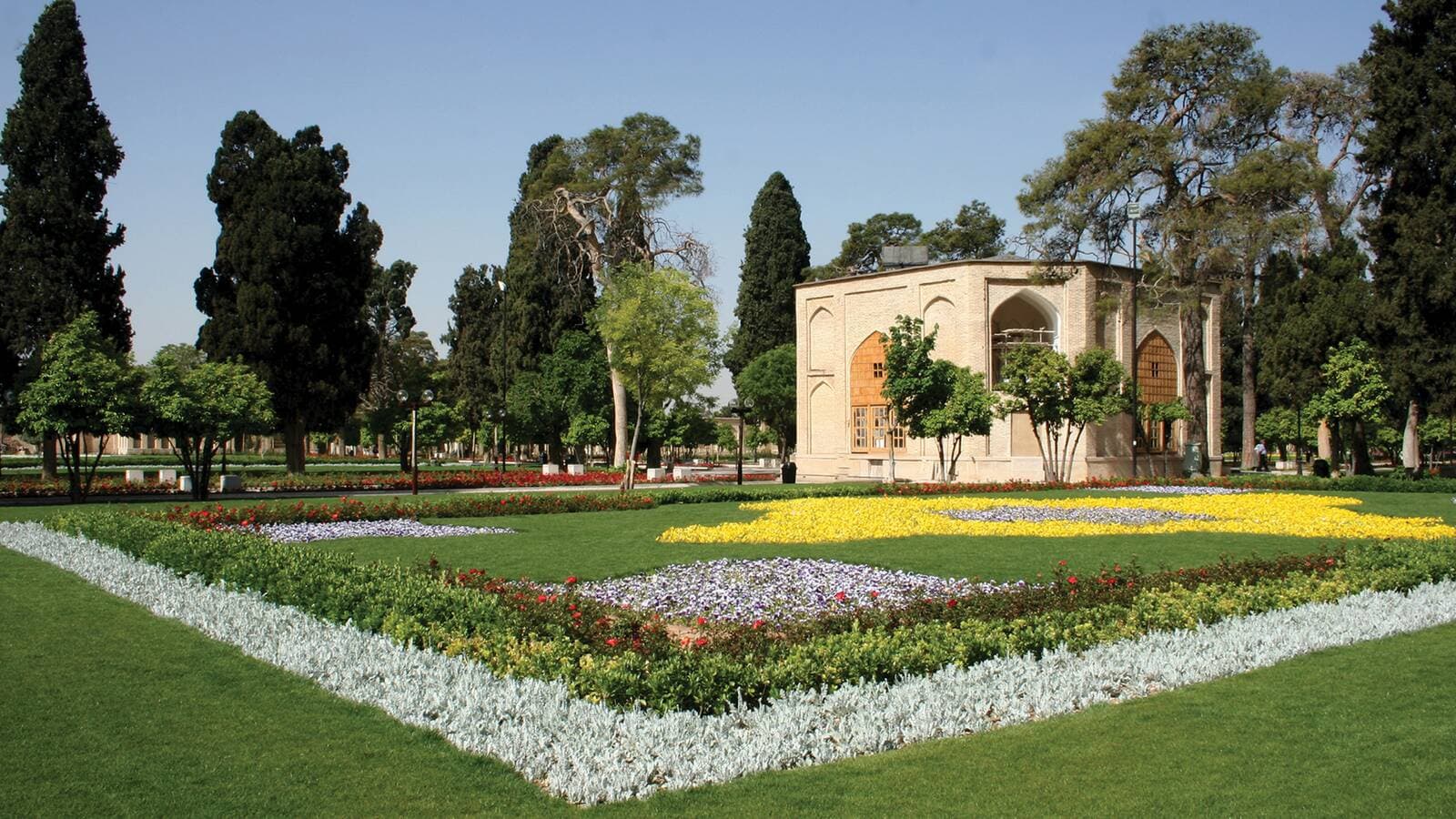
Conclusion
In conclusion, the best Persian gardens, such as Eram Garden in Shiraz, Fin Garden in Kashan, Shahzadeh Garden in Mahan, and Chehel Sotoun in Isfahan, represent the epitome of Iran's rich cultural and historical heritage. These gardens are renowned for their meticulous design, featuring the iconic Chahar Bagh layout, intricate water features, and lush greenery that create a harmonious blend of nature and architecture. Each garden offers a unique glimpse into the artistic and engineering prowess of different eras, from the ancient Achaemenid period at Pasargadae to the elegance of the Safavid and Qajar dynasties. Visiting these gardens not only provides a tranquil escape into natural beauty but also an immersive experience into the history and culture of Iran. As UNESCO World Heritage sites, these Persian gardens continue to captivate visitors from around the world, showcasing the timeless allure and enduring legacy of Persian landscape architecture.
Read More